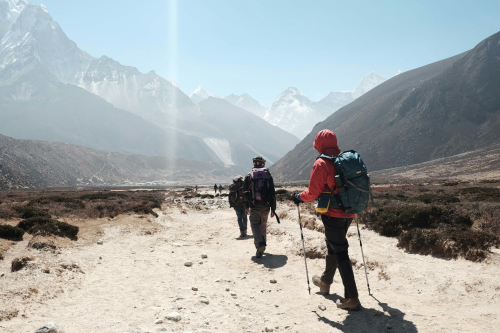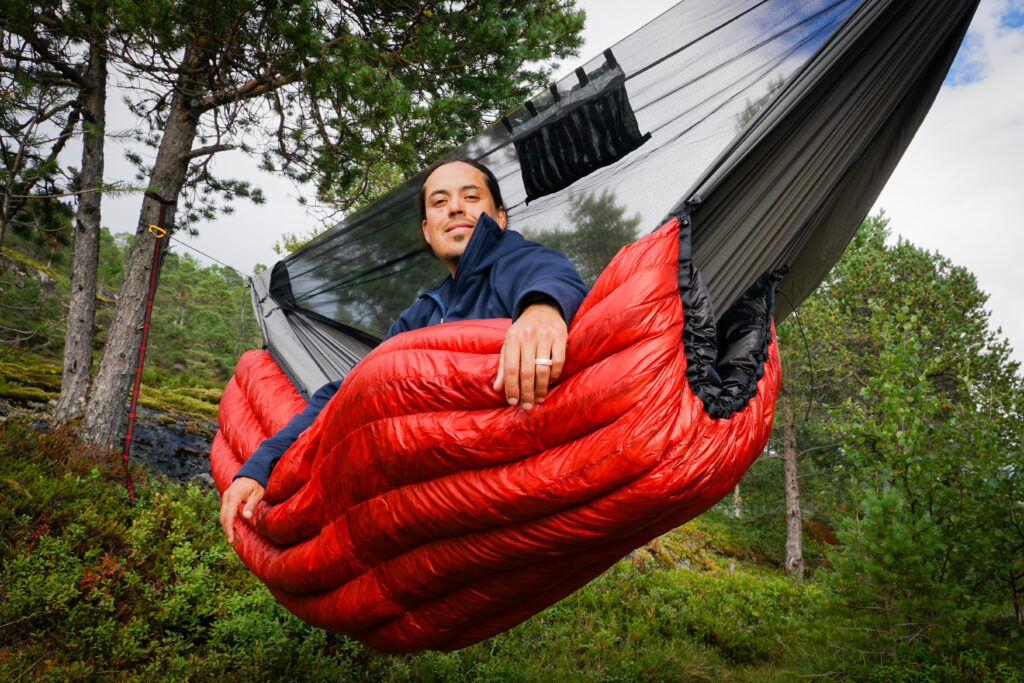Lightweight vs. Ultralight: A Backpacker’s Real-World Experience

Backpacking is a thrilling adventure that requires the right gear to ensure a safe and enjoyable experience. The choice of gear can make all the difference between a successful trip and a disastrous one. In this article, we will delve into the importance of choosing the right gear for backpacking and explore the ongoing debate between lightweight and ultralight philosophies.
When it comes to backpacking, gear is not just about aesthetics; it is about functionality and performance. The right gear can make a significant difference in your overall experience. It can provide comfort, safety, and convenience, allowing you to focus on the beauty of nature rather than worrying about your equipment. In this article, we will explore the key attributes to look for in backpacking gear and how they can enhance your adventure.
The debate between lightweight and ultralight philosophies is ongoing among backpackers. Lightweight gear emphasizes functionality and durability over weight reduction, while ultralight gear prioritizes extreme weight reduction, often at the expense of performance. Both approaches have their merits, and the choice ultimately depends on personal preferences and the type of backpacking you plan to do.
Understanding Lightweight Gear
Lightweight gear in backpacking refers to equipment that is designed to be light in weight, making it easier to carry during hiking and camping activities.
The goal of lightweight backpacking is to achieve a base weight (the total weight of your gear, excluding consumables like food and water) of less than 10 kg, as opposed to the traditional backpacking setup that often exceeds 20 kg.
Examples of Popular Lightweight Gear Options
Some popular examples of lightweight backpacking gear include:
- Ultralight tents and shelters that weigh less than 1 kg
- Lightweight sleeping bags and quilts that provide warmth without excessive bulk
- Minimalist backpacks with a capacity around 50 liters
- Compact and efficient stoves and cookware
- Lightweight hiking shoes or boots that are more flexible and breathable
Advantages and Disadvantages of Choosing Lightweight Gear
The main advantage of using lightweight gear is the reduced strain on your body. A lighter pack makes hiking more comfortable and reduces the risk of injury.
It also allows you to cover more ground with less effort, making your backpacking trips more enjoyable.
However, the trade-off is that ultralight gear is often more expensive and may compromise on certain features or durability compared to traditional heavy-duty equipment.
Ultralight backpackers also have to be more meticulous in their gear selection and packing to ensure they have all the necessary items without excess weight.
Overall, the choice between lightweight and traditional backpacking gear depends on your personal preferences, budget, and the specific demands of your trips.
Understanding the pros and cons of each approach can help you make an informed decision about the right gear for your backpacking adventures.
Exploring the Ultralight Approach
Ultralight backpacking is a philosophy that emphasizes minimizing the weight of your gear to achieve greater efficiency and comfort on the trail. It is not just about reducing the weight of individual items but also about adopting a mindset that prioritizes simplicity and functionality. The core principles of ultralight backpacking include:
- Efficiency: Using the least amount of gear necessary to achieve your goals.
- Functionality: Ensuring that each item serves multiple purposes.
- Durability: Choosing gear that can withstand the rigors of backpacking while minimizing weight.
- Sustainability: Considering the environmental impact of your gear choices.
Comparison of Ultralight Gear with Traditional Lightweight Gear
Ultralight gear is designed to be significantly lighter than traditional lightweight gear. While lightweight gear may still be heavy compared to ultralight gear, it often prioritizes durability and functionality over extreme weight reduction. Ultralight gear, on the other hand, often sacrifices some durability for extreme weight reduction. Here are some key differences:
- Tents: Ultralight tents are often smaller and more minimalist, weighing around 1-2 pounds. Lightweight tents may be larger and heavier, weighing around 2-4 pounds.
- Sleeping Bags: Ultralight sleeping bags are often down-filled and weigh around 1-2 pounds. Lightweight sleeping bags may be synthetic-filled and weigh around 2-4 pounds.
- Backpacks: Ultralight backpacks are often frameless and weigh around 1-2 pounds. Lightweight backpacks may have frames and weigh around 2-4 pounds.
Real-World Benefits and Challenges of Going Ultralight
The benefits of ultralight backpacking include:
- Increased Mobility: Lighter gear makes it easier to hike long distances without fatigue.
- Improved Efficiency: Ultralight gear often requires less maintenance and setup, freeing up time for other activities.
- Enhanced Experience: The focus on simplicity and functionality can lead to a more immersive and enjoyable backpacking experience.
However, there are also challenges:
- Higher Cost: Ultralight gear is often more expensive than traditional lightweight gear.
- Durability Concerns: Ultralight gear may not be as durable as traditional lightweight gear, requiring more frequent replacements.
- Learning Curve: Adopting an ultralight approach requires significant adjustments to your backpacking habits and mindset.
Ultimately, the choice between ultralight and lightweight gear depends on your personal preferences, budget, and the specific demands of your trips. Understanding the principles and benefits of ultralight backpacking can help you make informed decisions about your gear and enhance your backpacking experience.
Personal Journey: Lightweight vs. Ultralight
When I first started backpacking, I was drawn to the idea of lightweight gear. I invested in a quality backpack, sleeping bag, and tent that were all on the lighter side compared to traditional backpacking equipment. This initial setup allowed me to carry a base weight of around 15 kg, which was a significant improvement over the 20+ kg loads I had carried in the past.
Transition to Adopting Ultralight Principles
As I gained more experience on the trail, I became increasingly interested in the ultralight philosophy. I was intrigued by the idea of further reducing my pack weight to improve my mobility and overall enjoyment of the experience. Over time, I gradually replaced my gear with more specialized ultralight alternatives, focusing on items like a frameless backpack, a down quilt instead of a sleeping bag, and a tarp shelter.
Lessons Learned and Insights Gained from Both Approaches
Through my journey of exploring both lightweight and ultralight backpacking, I’ve gained valuable insights. The lightweight approach provided a solid foundation, allowing me to experience the benefits of carrying a more manageable load. However, the transition to ultralight gear has taken my backpacking experience to a new level. I’ve found that the reduced weight has significantly improved my endurance and allowed me to cover more ground with less effort.
At the same time, I’ve learned that the ultralight approach requires a more meticulous approach to gear selection and packing. Sacrificing some durability and comfort for weight savings can be a trade-off, and it’s essential to find the right balance for your personal needs and preferences.
Ultimately, the choice between lightweight and ultralight backpacking is a personal one, and it’s important to experiment and find the approach that works best for you. By understanding the principles and considerations of both philosophies, you can make informed decisions about your gear and enhance your overall backpacking experience.
Practical Considerations for Backpackers
When deciding between lightweight and ultralight gear, there are several key factors to consider:
- Budget: Ultralight gear is often more expensive than traditional lightweight options. Evaluate your budget and determine how much you’re willing to invest in your backpacking setup.
- Experience Level: Beginners may find the transition to ultralight gear challenging. Starting with a lightweight setup and gradually transitioning can be a more manageable approach.
- Trip Duration and Conditions: The length of your trips and the expected weather conditions should inform your gear choices. Longer trips or harsher environments may require more durable, albeit heavier, equipment.
- Personal Preferences: Consider your own comfort level and priorities. Are you willing to sacrifice some creature comforts for the benefits of an ultralight setup, or do you prefer a more balanced approach?
Tips for Beginners in Selecting Their Backpacking Gear
For backpacking beginners, we recommend the following tips when selecting your gear:
- Focus on the “Big Three”: Start by choosing a lightweight backpack, shelter, and sleeping system, as these items make up the bulk of your base weight.
- Prioritize Functionality Over Weight: While weight is important, ensure that your gear meets your needs in terms of comfort, durability, and safety.
- Gradually Transition to Lighter Gear: Don’t feel the need to go ultralight right away. Slowly replace heavier items with lighter alternatives as your experience and budget allow.
- Seek Advice from Experienced Backpackers: Connect with seasoned backpackers who can provide valuable insights and recommendations based on their own journeys.
Finding the Right Balance
Ultimately, the choice between lightweight and ultralight gear comes down to your personal preferences, budget, and the specific demands of your backpacking trips. By understanding the pros and cons of each approach, you can make informed decisions that align with your goals and enhance your overall backpacking experience. Remember, there is no one-size-fits-all solution – the right gear for you is the one that strikes the perfect balance between weight, functionality, and your individual needs.
You may also be interested in: How To Choose A Backpacking Hammock – Hammock Gear
Embark on your next adventure with Hammock Gear’s custom quilts! Tailor your comfort for the wild – choose your style, warmth, and size to craft your perfect eco-friendly outdoor companion, or grab a complete ultralight kit. Made in the USA for unparalleled quality and comfort. Trusted since 2009. Shop Now and tap into a community of nature lovers!⭐
Related Posts
The Best Camping Hammocks of 2024 – A Buyer’s Guide by Hammock Gear
A good camping hammock can completely transform how you experience…
Can Napping Hurt You? Unveiling the Pros & Cons of Daily Zzz’s
Napping, the act of taking a brief sleep during the…


